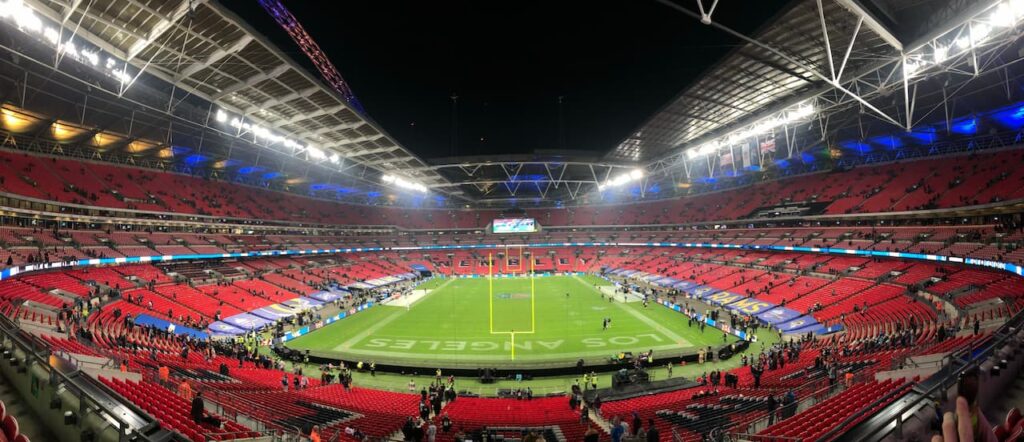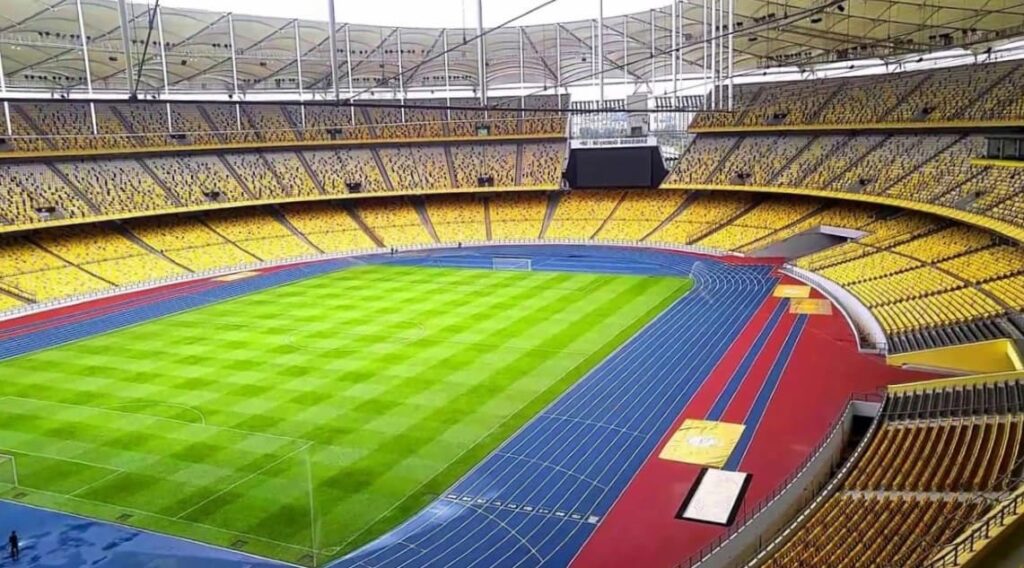The stadiums of the world are astonishing in their size, accommodating thousands of spectators. The biggest of them are worth special attention. Large stadiums filled with the energy and noise of fans create an unforgettable atmosphere. But even in the midst of such a massive event, some fans can be spotted playing online casino games without registration https://onlinecasinozonder.com/. We tell about their location, dates of foundation and other interesting facts.
Rungrado 1st of May Stadium (Pyongyang, North Korea)
North Korea’s Rungrado 1st of May Stadium in Pyongyang boasts a capacity of 150,000 spectators. It hosted its first games in 1989. Its opening was timed to coincide with the 13th Youth and Student Festival. The May Day Stadium has 16 arches forming a flower. The arena is shaped like a magnolia flower. The stadium hosts home matches of the DPRK national team, but its main purpose is to organise the Arirang mass festival. The people of North Korea put on colorful performances to mark the birthday of Kim Il-Sung, and citizens of other nations can sometimes attend.
Another interesting story about this stadium is the burning of the conspirators against Kim Jong-il.
Camp Nou Stadium (Barcelona, Spain)
Camp Nou stands out from the Spanish stadiums, located in Barcelona. It opened in 1957 and has a capacity of 99,354. It is Europe’s largest stadium and underwent numerous renovations in preparation for the 1982 World Cup. Changes were also required as UEFA introduced updated safety-related requirements.
Today, Camp Nou holds five-star status from the European football body. It is home to the Barcelona headquarters and the Granada museum, one of the most visited sites in Catalonia.
In 1998 a decision was made to lower the level of the pitch in order to save several hundred seats. In 2007 a competition was even launched to find the best project to renovate the stadium on the occasion of its fiftieth anniversary. They planned to increase the capacity of the stadium to 160,000 and have lighting effects added to its facade, but were never executed due to the world economic crisis.
The dimensions of the largest football pitch in Europe is 106 m x 70 m. Numerous awards and commemorative pictures and videos are stored in the stadium’s museum.
FNB Stadium (Johannesburg, South Africa)
Football is loved not only in Europe and America, but also in South Africa. One of the big stadiums with a capacity of 94700 spectators is located in Johannesburg. It has been in existence since 1989.
It hosted the Africa Cup of Nations in ’96, at which time the name Soccer City was coined. In the run-up to the first World Cup on the black continent, the stadium underwent a major renovation aimed at expanding its capacity. Some refer to Soccer City as the Calabash, alluding to its resemblance to the African fruit. The creators of the arena design admit that the stadium is shaped like a creeping vines from the pumpkin family. Its façade is decorated with a fiery mosaic in a shade of earth. The mosaic ring represents the flame pattern on the football ‘calabash’.
Rose Bowl Stadium (Pasadena, California, USA)
The Rose Bowl means the Rose Bowl and is a multi-sport arena located in the city of Pasadena, on the outskirts of Los Angeles. The University of California UCLA Bruins play regularly here. The locals love their American football matches. The stadium hosted games in the 1932 and 1984 Summer Olympics. The Rose Bowl has also hosted World Championships. It has been an open-air arena since 1922 and is recognised as a National Historic Landmark.
With a seating capacity of 92,542,000, the stadium is one of the world’s top 20 arenas, ranking 16th. It is one of the most popular arenas in sports history.
Wembley (London, UK)
If we are to list the biggest stadiums in the world then Wembley, the sports legend, deserves a special mention. It is in Wembley where the British football team won the league title. Wembley was also the venue where Manchester United won the European Cup for the first time. In early 2000s the authorities decided to demolish the outdated arena instead of the scheduled reconstruction, and to build a more modern one. A 134-metre arch and retractable roof became the stadium’s symbol, while earlier whitewashed towers fulfilled this role.

“Wembley is designed for 90,000 spectators, with its revised version launched in 2007.
The campaign also witnessed the stadium’s lawn, which has been the subject of complaints, being resurfaced, while the rivalry football stadium, which has been labelled the ‘new stadium’ for some years, has seen its roof replaced.
Azadi Stadium (Tehran, Iran)
The Azadi Stadium in Tehran, Iran, has a capacity of 100,000. It opened in 1971. When you think of the biggest stadiums it’s simply impossible not to mention it. For a long time this stadium was considered the largest in the world. The arena was inaugurated on the occasion of the Seventh Asian Games. Its original capacity was 120,000 spectators, but during the reconstruction several rows of seats were removed from below. In the early 2000s, the Tehran Arena underwent a major makeover: the lower tiers were replaced with large balconies, a system responsible for heating the pitch and a huge plasma screen.
“Azadi” is part of a large sports complex with a cycle track, tennis court, volleyball court and swimming pool.
Bukit Jalil Stadium (Kuala Lumpur, Malaysia)
The largest stadium in Malaysia, which is located in Kuala Lumpur, has a capacity of 100,200 spectators (including standing seats) and was opened in 1998. Construction was completed 3 months before the Commonwealth Games. The stadium is part of the National Sports Complex. The Bukit Jalil played host to the Asian Football Championship in 2007. The stadium often plays host to the national team and hosts the Supercup of Malaysia. Manchester United have played twice in the Asian Cup.

San Siro Stadium (Milan, Italy)
Milan’s San Siro Stadium holds 8,074 spectators and officially opened in 1926. The arena was originally only designed to hold 35,000. After the government purchased it from AC Milan, the decision was made to expand. The stadium was renovated on the eve of the 1990 World Cup, adding a few extra tiers and replacing the roof supported by four concrete towers. The cost of the reconstruction was $60 million. The modern version of the stadium includes a media box with a capacity of 400 people. The arena in Milan hosts concerts and rugby matches.